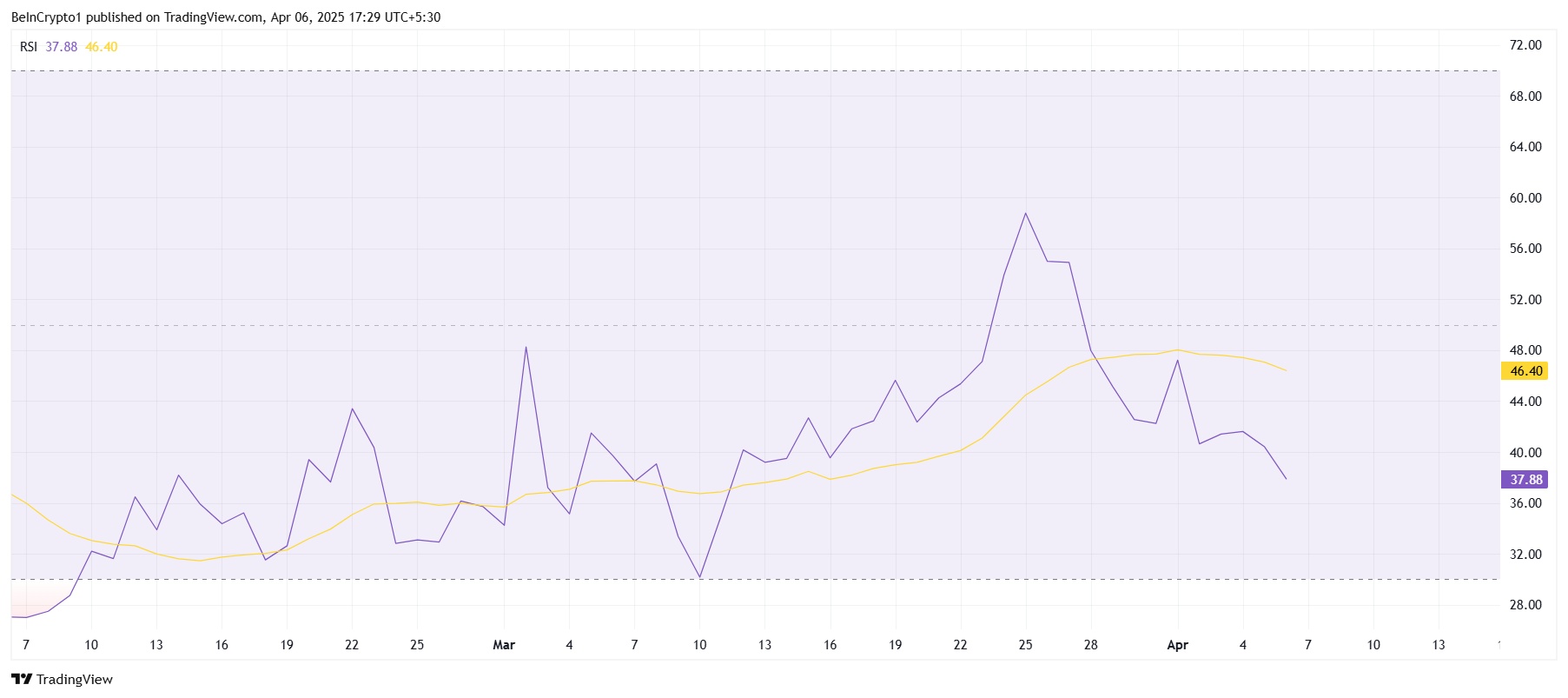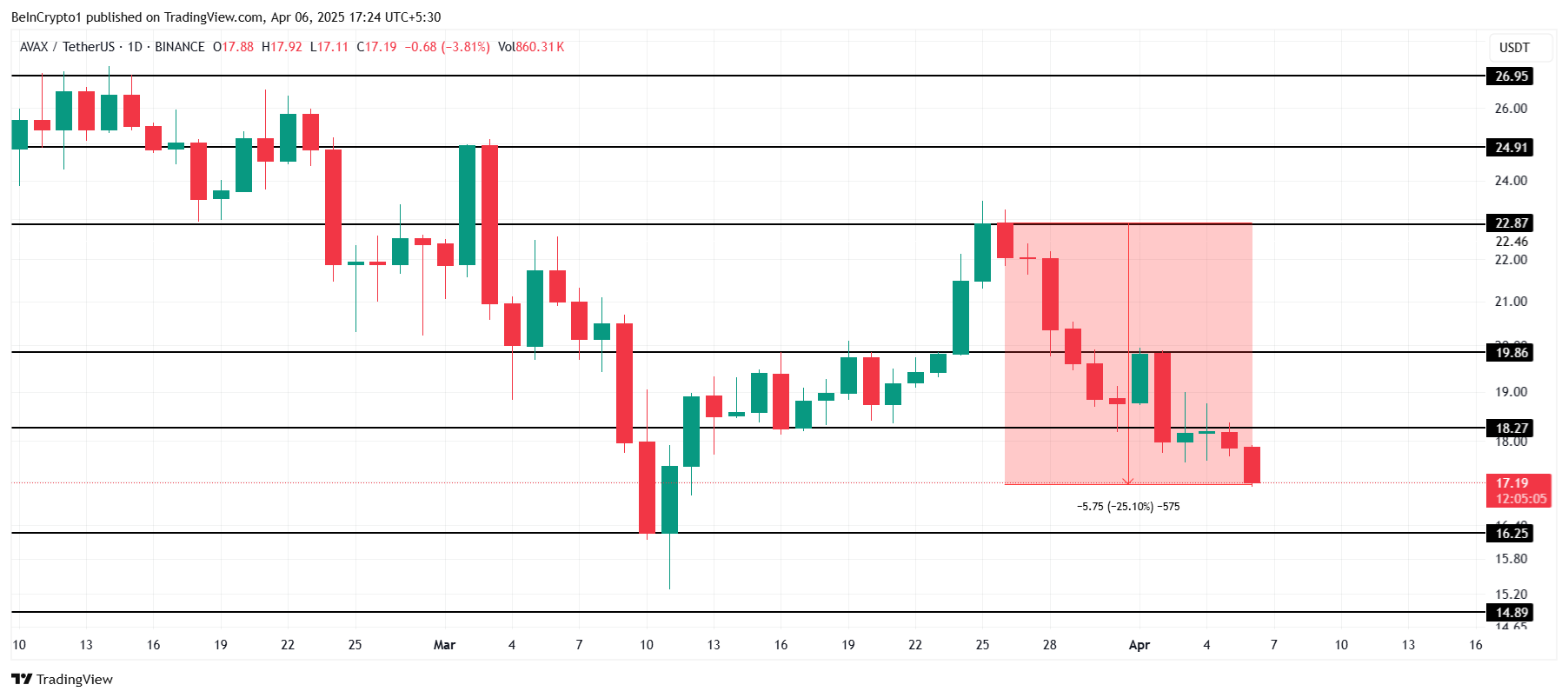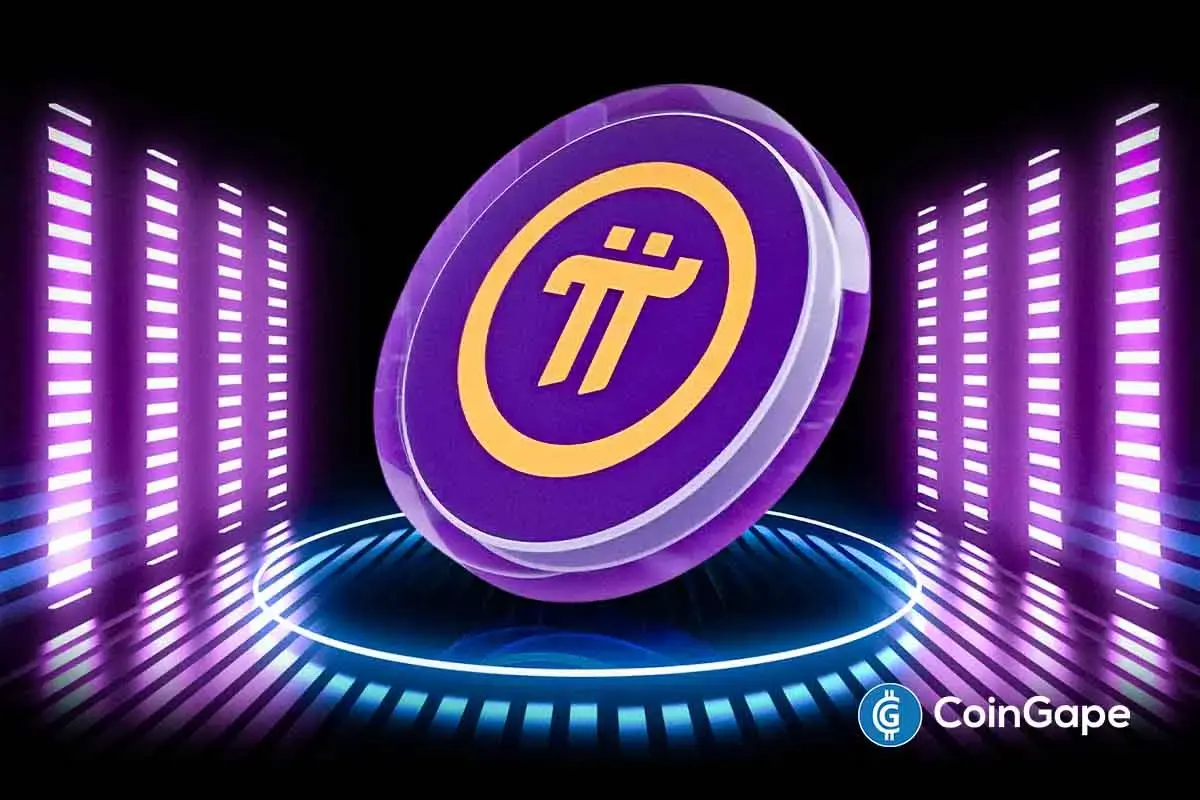Market
DOJ Arrests $73 Million International Pig Butchering Fraudsters

The US Department of Justice (DOJ) has arrested two Chinese nationals, Daren Li and Yicheng Zhang, for orchestrating a massive crypto scam known as “pig butchering.” This scheme led to the laundering of at least $73 million.
The arrests highlight that pig butchering scams remain a significant concern in the crypto industry.
The Duo Ran an International Scam Syndicate
According to the DOJ, officials arrested Li on April 12 at Hartsfield-Jackson Atlanta International Airport and transported him to the Central District of California. Meanwhile, Zhang was arrested in Los Angeles.
“We announce the arrests of two foreign nationals charged for leading a scheme to launder funds tied to an international crypto investment scam. Crypto investment scams exploit the borderless nature of virtual currency and online communications to defraud victims,” Deputy Attorney General Lisa Monaco said.
The DOJ discovered extensive coordination from their communications to facilitate international money laundering, including chats discussing the network’s commission structure, various shell companies used, victim information, and at least one video of a conspirator calling a US financial institution.
Li and Zhang managed an international syndicate of pig butchering investment scams. The duo instructed co-conspirators in the laundering network to open bank accounts in the names of shell companies. Once the victims sent funds to the shell companies, Li and Zhang monitored the lower-level co-conspirators who transferred the proceeds overseas to bank accounts at Deltec Bank in The Bahamas.
The scheme involved more than $73 million converted to the USDT stablecoin. Additionally, a cryptocurrency wallet in the scheme received more than $341 million in virtual assets.
Li and Zhang are charged with conspiracy to commit money laundering and six substantive counts of international money laundering. They face a maximum penalty of 20 years in prison on each count if convicted.
In response to this case, Assistant Director of Investigations Brian Lambert of the US Secret Service explained that the US financial infrastructure is under threat from complex financial fraud schemes.
“Complex financial fraud schemes such as pig butchering present a clear and present threat to the financial infrastructure of the US as countless numbers of Americans continue to be victimized by this predatory activity,” Lambert said.
Lambert’s statement aligns with Federal Bureau of Investigation (FBI) data. According to the 2023 Internet Crime Report from the FBI, investment fraud was the costliest crime tracked by IC3.
Read more: Crypto Scam Projects: How To Spot Fake Tokens

Losses to investment scams rose from $3.31 billion in 2022 to $4.57 billion in 2023, a 38% increase. Confidence/romance crimes accounted for 17,823 complaints throughout the year.
False Promises and Empty Wallets: The Anatomy of Pig Butchering Scams
Pig butchering scams involve fraudsters creating fake identities to connect with potential victims, typically via text messages, social media platforms, or dating apps. Gradually, these scammers build seemingly genuine relationships with their targets through regular and friendly interactions. This method resembles the practice of fattening a pig before butchery, hence the name.
Once relationships are established, scammers introduce cryptocurrency into the dialogue. They typically don’t request money or cryptocurrency directly. Instead, they offer to help victims with their investment strategies and direct them to send money to platforms under their control.
Initially, victims may transfer small amounts to a cryptocurrency exchange. To keep the scam believable, scammers provide fake account information showing the victims’ investments are increasing.
They might even allow victims to withdraw a portion of their initial investment to appear legitimate. Scammers persist in pressuring victims to send more money until they are completely drained of funds.
Read more: 15 Most Common Crypto Scams To Look Out For
A United Nations report describes the Mekong region of Southeast Asia as the primary hub for this criminal activity. An increasing number of casinos blend with ungoverned borders and armed groups in Myanmar’s long-running civil conflict. This background creates ideal conditions for massive money-laundering operations.
Disclaimer
In adherence to the Trust Project guidelines, BeInCrypto is committed to unbiased, transparent reporting. This news article aims to provide accurate, timely information. However, readers are advised to verify facts independently and consult with a professional before making any decisions based on this content. Please note that our Terms and Conditions, Privacy Policy, and Disclaimers have been updated.
Market
Bitcoin Price Drops Below $80,000 Amid Heavy Weekend Selloff

Bitcoin fell below the $80,000 mark on Sunday as investor sentiment weakened across global markets. The move came alongside a spike in daily liquidations, which totaled $590 million.
Heightened anxiety over former President Donald Trump’s proposed tariffs and escalating geopolitical tensions weighed heavily on risk assets.
More Traders are Shorting Bitcoin After the Worst Q1 In a Decade
The long-short ratio for Bitcoin dropped to 0.89, with short positions now accounting for nearly 53% of activity. The shift reflects growing skepticism about Bitcoin’s short-term direction.
Traditional markets also suffered sharp losses. The Nasdaq 100, S&P 500, and Dow Jones all entered correction territory last week, posting their worst weekly performance since 2020.

Bitcoin closed the first quarter with a loss of 11.7%, making it the weakest Q1 since 2014.
The broader crypto market lost 2.45% on Sunday, reducing total market capitalization to $2.59 trillion. Bitcoin remains the dominant asset, holding 62% of the market share. Ethereum follows with 8%.
Sunday’s selloff triggered $252.79 million in crypto derivatives liquidations. Long positions made up the bulk of that figure at $207 million. Ethereum traders accounted for about $72 million in long liquidations alone.
Bitcoin’s price remains closely tied to shifts in global liquidity, often reflecting broader macro trends. With U.S. markets set to open Monday, this weekend’s activity signals continued volatility ahead.

Investors may face more pressure after Federal Reserve Chair Jerome Powell warned that Trump’s tariff plans could push inflation higher while slowing economic growth.
That combination raises the risk of stagflation, a situation where policy tools become less effective. Efforts to stimulate the economy can worsen inflation, while measures to control prices can limit growth.
Disclaimer
In adherence to the Trust Project guidelines, BeInCrypto is committed to unbiased, transparent reporting. This news article aims to provide accurate, timely information. However, readers are advised to verify facts independently and consult with a professional before making any decisions based on this content. Please note that our Terms and Conditions, Privacy Policy, and Disclaimers have been updated.
Market
Avalanche Price Holds Under $20, Low Selling Can’t Lift Price

Avalanche (AVAX) price has been unable to reclaim the $20.00 support level after falling through it in the recent correction. The altcoin is now trading well below that key mark despite a noticeable decline in selling pressure.
However, bullish momentum has not been strong enough to counter prevailing bearish cues.
Avalanche Investors Are Not Selling
Analyzing the active address profitability reveals that less than 3% of current participants are in profit. This data highlights a crucial detail: most AVAX holders are unwilling to sell at a loss. Instead, they appear to be HODLing in anticipation of a recovery. This lack of selling is a bullish indicator.
The patience shown by investors during this downturn could help Avalanche establish a stronger base once broader market conditions stabilize. As fewer holders are actively selling, downward pressure on AVAX’s price is reduced. Given the right market catalysts, this opens a window for the altcoin to bounce back.

Despite low selling activity, the technical indicators continue to signal weakness. The Relative Strength Index (RSI) has dropped back into the bearish zone after a brief recovery attempt. This suggests a lack of buying pressure and continued uncertainty among investors.
Market support has been lacking for AVAX in recent sessions, preventing a meaningful rebound. The altcoin is facing consistent resistance and has failed to generate strong upward momentum.
The RSI trend reinforces that the macro environment is still leaning bearish, keeping Avalanche subdued.

AVAX Price Is Vulnerable
Avalanche is currently priced at $17.19, marking a 25% decline over the past two weeks. The sharp drop came after AVAX failed to break through the $22.87 resistance level. This rejection led to the current consolidation below $20.00, with bulls unable to reverse the trend.
Given the existing market cues, Avalanche may struggle to reclaim $18.27 as a support level. If the altcoin fails to secure this level, it risks dropping further to $16.25. This would deepen investor losses and delay any chances of recovery.

On the upside, a key shift would occur if AVAX can flip $19.86 into support. This would suggest strengthening bullish sentiment and open the door for a rally toward $22.87. Reclaiming this level could allow Avalanche to recover some recent losses and restore investor confidence.
Disclaimer
In line with the Trust Project guidelines, this price analysis article is for informational purposes only and should not be considered financial or investment advice. BeInCrypto is committed to accurate, unbiased reporting, but market conditions are subject to change without notice. Always conduct your own research and consult with a professional before making any financial decisions. Please note that our Terms and Conditions, Privacy Policy, and Disclaimers have been updated.
Market
Justin Sun Claims First Digital Trust Fraud Exceeds Impact of FTX


TRON founder Justin Sun is intensifying his accusations against First Digital Trust (FDT), the issuer of the FDUSD stablecoin, who he claims embezzled $500 million of its clients’ funds.
In an April 5 post on X, Sun compared FDT to the now-defunct FTX exchange, claiming the FDT case is “ten times worse.” FTX filed for bankruptcy in November 2022 after a bank run revealed an $8 billion shortfall in its assets.
Justin Sun Compares First Digital Trust to FTX
Sun argued that while FTX misused user funds, the exchange at least maintained an internal system that portrayed the activity as pledged loans.
He explained that FTX used assets like FTT, SRM, and MAPS tokens as collateral in transactions that, on the surface, had some structure. In contrast, Sun claims First Digital Trust outright stole funds without user consent or any internal pledge mechanism.
“FDT simply siphoned off $456m from TUSD’s custodial funds without client authorization or knowledge, and booked as loans to a dubious third party Dubai company without any collaterals,” Sun claimed.
The Tron founder further asserted that the now-convicted FTX founder Sam Bankman-Fried (SBF) indeed misused funds. However, Sun noted much of that capital went into investments in reputable firms such as Robinhood and AI company Anthropic.
On the other hand, Sun alleged that FDT diverted user assets into private entities for personal gain without any meaningful investment.
Sun also took aim at FDT CEO Vincent Chok Zhuo, criticizing his apparent indifference following the exposure of the alleged misconduct.
According to him, Chok has shown no intention of taking responsibility. This contrasts with SBF, who took steps to recover user assets and cooperated with authorities.
“Vincent Chok has acted deceptively and maliciously, pretending nothing happened when exposed,” Sun stated.
Considering this development, the TRON founder urged Hong Kong authorities to take swift action. He called for a response similar to that of US regulators during the FTX collapse.
Sun emphasized that Hong Kong’s reputation as a global financial hub is at risk and called for immediate enforcement to prevent further damage.
“Hong Kong must act like its US counterparts—swiftly, decisively, and effectively. We cannot allow the fraudsters continue its pyramid scheme against the public,” the crypto entrepreneur concluded.
To support investigations, Sun has launched a $50 million bounty program aimed at exposing the alleged misconduct. He also met with Hong Kong lawmaker Johnny Wu to discuss potential regulatory action.
Disclaimer
In adherence to the Trust Project guidelines, BeInCrypto is committed to unbiased, transparent reporting. This news article aims to provide accurate, timely information. However, readers are advised to verify facts independently and consult with a professional before making any decisions based on this content. Please note that our Terms and Conditions, Privacy Policy, and Disclaimers have been updated.
-

 Altcoin20 hours ago
Altcoin20 hours agoBitcoin Holds $83K Despite Macro Heat, What’s Happening?
-

 Ethereum16 hours ago
Ethereum16 hours agoEthereum Whale Activity Fades Since Late February – Details
-

 Market16 hours ago
Market16 hours agoXRP High Stakes Setup: Analyst Warns Of Sharp Move To $17 Or $0.65
-

 Market15 hours ago
Market15 hours agoSEC Reconsiders Howey Test Use in Crypto Oversight
-

 Market14 hours ago
Market14 hours agoHBAR Could Avoid $30 Million Liquidation Thanks to Death Cross
-

 Market13 hours ago
Market13 hours agoConor McGregor’s Crypto Token REAL Tanks After Launch
-

 Ethereum21 hours ago
Ethereum21 hours agoEthereum Whales Dump 500,000 ETH In 48 Hours: On-Chain Data
-

 Ethereum18 hours ago
Ethereum18 hours agoIs Ethereum Price Nearing A Bottom? This Bullish Divergence Suggests So




















